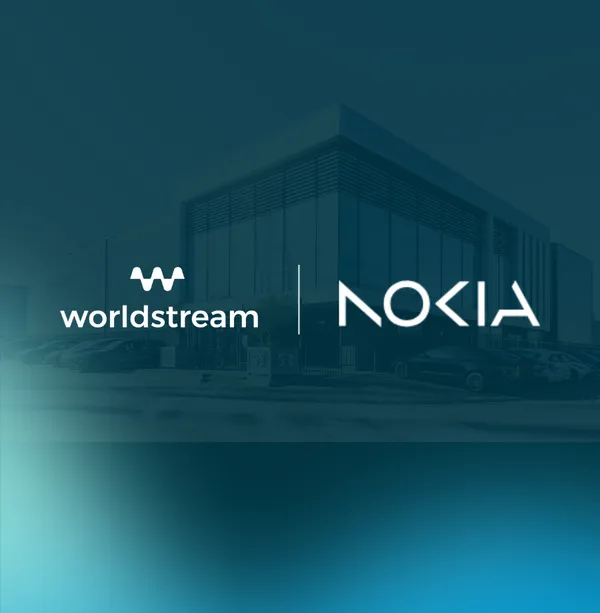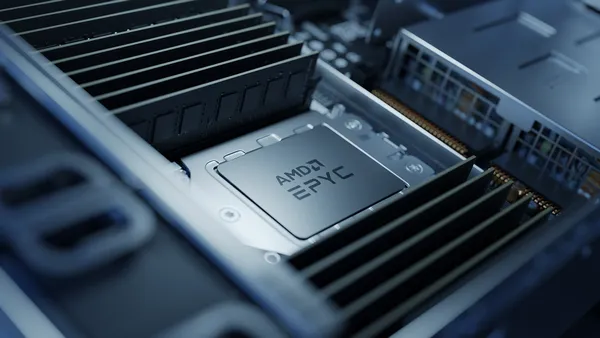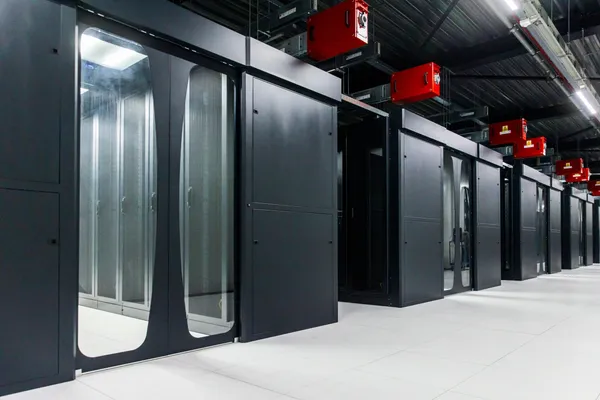8 Advantages of Using SDN for IT Infrastructure Deployment

Knowledge blog

Every year, an organization’s data consumption increases exponentially, driven by technology trends like cloud and edge computing, data analysis, artificial intelligence (AI), and machine learning (ML). Cloud and associated technological innovations will continue to accelerate, boosting data consumption even further. As an organization, you’ll have to create agility to keep up with these IT developments and data growth at breakneck speed. From the IT infrastructural perspective, software defined networking (SDN) can help tackle agility issues being encountered and provide answers.
The Many Upsides of Software Defined Networking
The foundation of SDN is virtualization. Although the execution of SDN technology and accompanying solutions may vary, it allows software to run independently of the underlying hardware. SDN decouples network tasks from underlying hardware and shifts network building and administration to the software layer, similar to how server virtualization decouples server operations from underlying hardware. It also separates the data layer from the management layer.
Virtualization initially supported the emergence of cloud computing. Now it allows enterprises, data center services providers, managed service providers (MSPs), systems integrators, independent software vendors (ISVs) and other tech-oriented companies to create network-driven innovation and agility. It provides for dynamic provisioning of data center infrastructure resources exactly where they are needed, even in real time. All by utilizing SDN.
To keep up with the speed and complexity of cloud computing and associated technological innovations as well as expanding and tightening data processing requirements, data center services infrastructure must be able to adapt, become more flexible and respond automatically. SDN technology provides answers to these contemporary organizational requirements.
The use of SDN can be interesting for many organizations, including enterprises, SMBs, as well as IT channel companies such as CSPs, MSPs and systems integrators. Making the move to SDN technology may also leave an organization’s network and data center infrastructure environment more secure and reliable. The use of SDN can be particularly relevant for organizations who are active in data-sensitive verticals such as healthcare, finance, and government, to mention a few, for those organizations that also handle large numbers of applications. On the other hand, as said, a wide array of organizations may find that SDN-powered data center services infrastructure is better accessible, better manageable, and more cost-effective than traditional data center services infrastructure, catering to current and future IT infrastructure agility needs.
To sum up, the following provides an overview of 8 key benefits that SDN may bring to virtually all companies with digital operations:
1. Enhanced IT Infrastructure Visibility
2. Centralized IT Provisioning and Management
3. Making IT Infrastructure Scalable
4. Creating Flexibility for IT Infrastructure
5. Achieving IT Efficiency and Cost Reduction
6. Supporting Private and Hybrid Cloud Deployment
7. Enhanced IT Infrastructure Reliability
8. Consistent and Granular Security
Let us elaborate on these benefits brought by SDN and conclude with some explanation on the NFV technology that Worldstream’s R&D team has added to its SDN offering to further boost the agility capabilities for an organization’s IT infrastructure.
1. Enhanced IT Infrastructure Visibility
As SDN comes with a consolidated, centralized networking infrastructure console, organizations are better enabled to identify and manage switches, routers, firewalls, wired and wireless networking components, as well as remote network access. The same goes for cybersecurity threats and intrusion attempts on an organization’s network and business assets. With one centralized SDN controller, also known as a ‘single pane of glass,’ it’s far easier to identify data center component issues. Moreover, by employing a central network management tool, organizations can govern both virtual and physical data center networking assets. A single set of APIs that goes with SDN technology allows for the creation of this single IT administration platform to manage virtual and physical data center appliances.
Within an SDN architecture, the central SDN controller houses the IT infrastructure management intelligence, which increases visibility and helps to reduce the complexity of data center and networking components. The enhanced visibility may help organizations speed up data center infrastructure development and IT service delivery, allowing them to respond to quickly evolving business and IT infrastructure needs with more agility and responsiveness.
2. Centralized IT Provisioning and Management
It’s one of the main advantages of SDN: the ability to control a network from a central location. As the SDN technology virtualizes and separates the control plane (decision making) and data plane (decision execution), it allows organizations to provision and manage both physical and virtual data center resources from a single place. In traditional IT infrastructure setups, it can be challenging to monitor and manage all the networking equipment, especially when we’re talking about a mixed data center environment with numerous diverse vendor systems which have to be maintained separately. SDN eliminates this barrier, allowing organizations to have a complete network resources overview and have it managed properly and efficiently.
Typically, an organization’s network equipment including switches and routers are only aware of the equipment in their immediate vicinity. With SDN technology and a smartly designed SDN controller, that centralized entity allows for easy addition of new data center components to the network. It also facilitates in centrally governing the complete data center networking environment, from policy changes to network functionality configuration and automation across the organization.
Talking about networking resources provisioning, SDN technology may speed up new service delivery dramatically. This may be beneficial for any organization but certainly for companies with distributed edge locations and a limited number of IT staff onsite. Organizations’ edge locations will likely benefit from efficient and quick remote provisioning of resources and centralized network management. It may also provide them with ongoing cybersecurity monitoring and solutions deployment as well as security policy effectuation that’s always up to date. SDN is in that sense capable of bringing operational reliability, speed, and security, even in more complex distributed IT infrastructure environments.
SDN also helps to reduce the time it takes to resolve IT infrastructure issues within the data center environment. Organizations that want to speed up their troubleshooting response times and the ones with limited in-house engineering support, or companies that just wish to free-up IT engineering support to focus on value-adding tasks, can utilize SDN consoles to spot problems more rapidly. In addition, it allows them to rule out certain scenarios. This pre-selection may cut troubleshooting time significantly, allowing organizations to solve data center environment issues remotely and have their employees get back to work faster.
3. Making IT Infrastructure Scalable
As a result of virtualized network infrastructure with centralized provisioning, SDN provides its users with better scalability. The network infrastructure can be updated and expanded at any moment since it allows for the provisioning of data center resources on demand. When compared to a traditional, decentralized network setup where physical network appliances must be bought, installed and configured manually, the difference in scalability options is striking.
Within a traditional network setting, adding new data center features frequently requires large upfront investments and an ROI (return on investment) to be calculated. As a result, when organizations intend to scale their IT Infrastructure, whether it’s about capacity or functionality, under the old paradigm, the financial risks can be significant. For a traditional network setting, equipment capacity requirements with respect to routers, firewalls, and/or load balancers, must be calculated over longer time periods since they must be amortized over several years. As these predictions and calculations can become quite complex, it may easily go wrong, potentially resulting in data center functionality that either becomes a bottleneck at the end of a lifecycle or turns out to be far too expensive an investment in retrospect. In addition, when lifecycles of hardware infrastructure are an integral part of scalability considerations, organizations automatically run the risk of holding back and doing concessions in terms of data center infrastructure expandability and desired functionality. With SDN, the infrastructural side can be fully in line with modern functionality needs and current business requirements.
4. Creating Flexibility for IT Infrastructure
As an SDN separates routing management from data transmission, software-defined networks have the benefit of being able to handle an organization’s IT infrastructure highly flexible. There are no isolated data center solutions and there’s no reliance on a manufacturer’s proprietary protocols, while new data center components may be added to the network flexibly and with ease. The central SDN control console is able to provide all of the communication details that existing and new hardware and software components require to execute their functions as part of the overall network.
Individual network appliance setups including switches and routers are no longer required, and amendments can be instantly transmitted throughout the entire network. Creating dynamic, SDN-powered data center interconnects is another feature that SDN technology may bring. Depending on the architecture of an SDN controller, it can provide extremely efficient pathways through the network and make the greatest use of transmission lines by understanding the whole network topology.
5. Achieving IT Efficiency and Cost Reduction
Organizations can save time and money using SDN because it greatly enhances an organization’s data center infrastructure efficiencies and simplifies IT managers’ daily tasks. This is because the software with centralized monitoring, management and provisioning can handle an organization’s configuration end-to-end, allowing an IT engineering team to concentrate on business-supporting IT infrastructure design and value-adding resource deployment. With SDN, the network setup process becomes much faster and more flexible, allowing for major cost savings. Bandwidth can be adjusted for the entire network in minutes, services can be easily activated or deactivated, and even complex tasks like virtual network infrastructure modifications or Wi-Fi network setup can be done much quicker than with traditional network designs.
As SDN technology may run on commodity hardware rather than pricey specialist equipment, an SDN infrastructure is frequently less expensive than a traditional pure hardware-based data center networking infrastructure. With SDN, numerous functionalities may be executed on a single piece of hardware instead. SDNs may thus provide for reduced IT footprints, meaning that less actual hardware is required, resulting in networking resource consolidation and cost reductions in terms of both data center space and power usage.
6. Supporting Private and Hybrid Cloud Deployment
Many organizations nowadays tend to opt for a hybrid cloud strategy when it comes to their IT infrastructure design. Hybrid cloud may provide organizations with more control over sensitive data while at the same time adding the flexibility and scalability of cloud-based applications. It may contain co-located and on-premises infrastructure as well as private cloud and public cloud. With SDN, data traffic between on-premises, co-located data center infrastructure and cloud may be scheduled, controlled, and maintained centrally thus more effectively. It will help organizations to achieve greater agility, scalability, and cost-efficiencies for their mix of in-house kept, co-located and cloud-hosted applications.
For a truly effective hybrid cloud design, highly flexible network resource deployment is needed – with flexible route management, granular policy enforcement, automation, and the highest flexibility to combine and customize a wide variety of hardware and software suppliers on the fly. It also requires solid orchestration for an automated, efficient provisioning and sharing of network resources. The use of traditional networking would carry the risk of sluggish provisioning, bandwidth constraints, poor network resource usage, and increased cybersecurity vulnerability. A hybrid cloud model is therefore better off with SDN as it brings the capabilities that are lacking in traditional data center networking environments.
7. Enhanced IT Infrastructure Reliability
SDN is also an excellent choice for organizations when it comes to IT infrastructures with high availability requirements. The technology enables IT managers to reroute networking paths on the fly, thereby significantly enhancing the reliability of an organization’s network. When a network outage would happen, for example, a software defined network might be programmed to automatically redirect around the affected region and keep all end-points in an organization’s network connected.
As a result of its reliability benefits for the organizational network, an SDN also adds to an efficient and effective implementation of quality of service (QoS) mechanisms, which is quite important for use cases such as Voice over IP (VoIP) and video transmission, to name just two examples. In a traditional data center network setting, all network switches and routers via which voice and video traffic will be delivered should have QoS enabled. Traditionally, these techniques were set up individually on each network appliance. For a small network, this can be fine, but for an extensive network bridging a wide variety of sites in perhaps multiple countries this can become nearly unmanageable. With SDN, QoS management issues like these are a thing of the past.
8. Consistent and Granular Security
Another key benefit of software-defined networking that will definitely cater to the agility needs and infrastructural expectations of organizations. Keeping the expanding number of endpoints in any organization’s IT Infrastructure in mind, SDN allows for malicious traffic to be blocked on a highly granular level throughout the network. As a result, if any malicious activity is being traced, IT managers may quickly react and deal with the potential issue accordingly. Instead of the hours it would take to manually solve a network issue, SDN may allow organizations to deal with it in seconds.
When major security updates are released, manually setting them on each device may be time consuming as well. It could also result in unintentional misconfigurations or data center appliances being missed. With SDN, through the SDN controller, each data center appliance may be upgraded without having to access the actual appliances. It implies that all changes and upgrades to the appliances may be disseminated from a central location throughout the organizational network, flawlessly and quickly.
Next to that, inconsistencies with which security rules are applied can be a major contributor to security issues in an organization’s IT infrastructure. In addition to a hacker’s proactive attempt to penetrate an organization’s IT environment from outside a firewall, incorrectly implemented security rules within an organization’s IT environment can mistakenly compromise data center infrastructure assets as well. SDN allows for centralized and automated delivery of data center infrastructure security functions throughout the network. Organizations can implement centrally established security rules, for example, to prevent production or HR from accessing accounting data. The security rule instructions are subsequently sent on to all applicable appliances via the SDN controller, assuring consistency and reliability with respect to the overall infrastructural design.
Boosting Agility: SDN and NFV Combined
NFV technology is a key enabler of SDN adoption, strengthening all agility advantages that SDN may bring to an organization’s IT infrastructure. The combination of SDN and NFV technologies is in fact taking agility to the max, bringing even more flexibility, scalability, speed in provisioning, cost reduction, and security to an organization’s data center environment. As developed by Worldstream and offered through its website here under the name of Worldstream Elastic Network, SDN and NFV technologies combined are able to add virtualized network functions (VNFs) to an organization’s network. A unique and crucial element of a powerful SDN/NFV based network is the design of the SDN controller, something that took Worldstream’s R&D team quite some engineering research and development (R&D) hours.
The SDN developed by Worldstream offers a highly dynamic, network-powered platform for deploying all kinds of data center services in an extremely flexible way, even creating the option to move infrastructural functionality as well as workloads in real-time.
Worldstream’s SDN-powered Offerings
Worldstream was founded in 2006 by childhood friends with a shared passion for gaming. Dissatisfied with the high costs and unreliability of game servers, they came up with the idea of offering better solutions. Since then, the Westland-based IT company has grown into an international player of IT infrastructure (IaaS).
Worldstream aims to uncomplicate the lives of IT leaders at tech companies. As a provider of data center, hardware, and network services, Worldstream serves various business markets, including Managed Service Providers (MSPs), System Integrators (SIs), Independent Software Vendors (ISVs), and web hosting companies. The key business objective of Worldstream is to give IT leaders peace of mind by providing high-quality infrastructure, industry-leading service, and strong partnerships that will get them excited about their IT infrastructure again.
Worldstream’s SDN allows for dynamic and powerful deployment of infrastructural resources at the edge, including private cloud, bare metal servers, block storage and object storage, dedicated servers, cloud on-ramps to private clouds, firewalls, and more. These SDN/NFV-powered solutions can be found here.
You might also like:
7 Benefits of Using Public Cloud Infrastructure.
The difference between Bare Metal Cloud and Dedicated Servers.
What are your options against a growing number of DDoS attacks?
Have a question for the editor of this article? You can reach us here.

Latest blogs
The Ultimate Gaming Latency Guide: How to Eliminate Lag and Maximize FPS
Knowledge blog

Growing smarter with less maintenance

Knowledge blog

Worldstream and Nokia Join Forces for Next-Gen DDoS Protection

News

Worldstream unveils new positioning and offers customers more control over their digital infrastructure

News

5th Gen AMD EPYC 9355P – Now Live at Worldstream

News

Nokia strengthens Worldstream’s hosting security with advanced DDoS Protection in the Netherlands.

News
